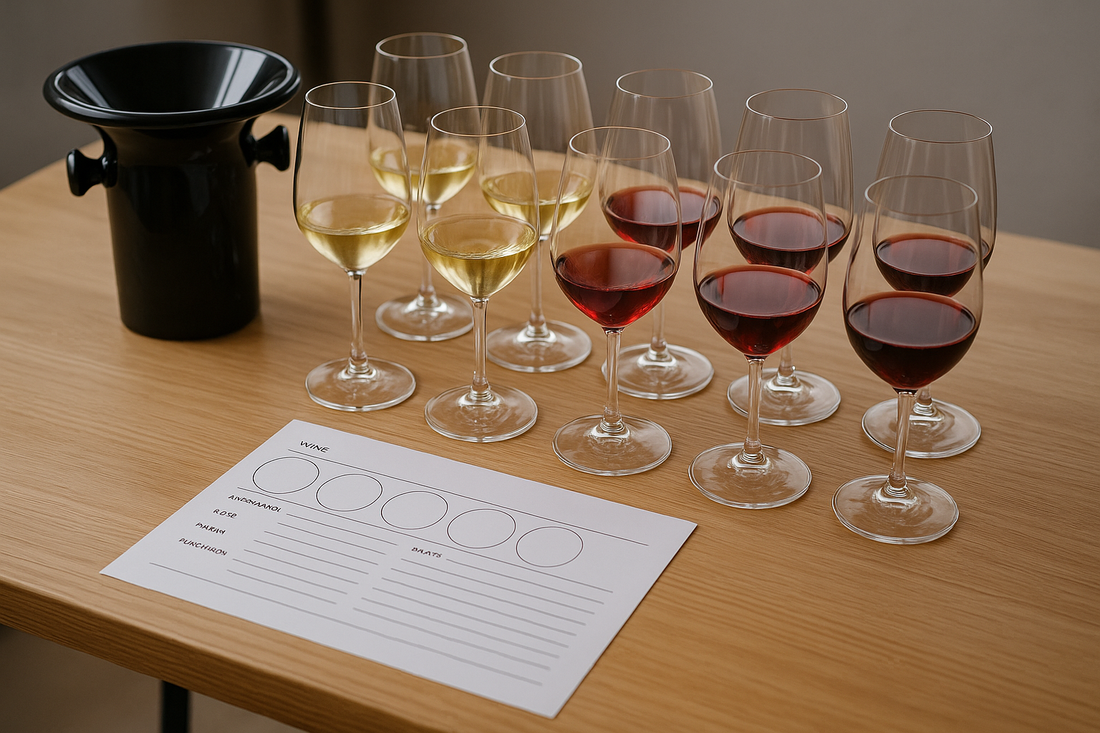
How to Taste Wine Like a Sommelier: A Step-by-Step Guide
Share
Introduction
Tasting wine is more than just drinking — it is an art and a science that engages all your senses. Whether you’re a casual wine drinker or aspiring to be a sommelier, learning the proper tasting technique will elevate your appreciation and help you identify quality, style, and subtle nuances in every glass. In this guide, I will walk you through the step-by-step process used by sommeliers worldwide to evaluate wine like a true professional.
Step 1: Observe the Color and Clarity
The first impression of a wine is visual. Hold your glass by the stem and tilt it slightly against a white background or table. Observe the color intensity, hue, and clarity.
- White wines can range from pale straw to golden amber. Younger whites tend to be lighter, while aged whites deepen in color.
- Red wines vary from bright ruby to deep garnet and purple tones. Older reds lose their brightness and show more brick or tawny hues.
Color gives clues about the grape variety, age, and sometimes even the climate where the grapes were grown. For example, a deep purple may indicate a youthful Syrah, while a pale red could be a Pinot Noir.
Step 2: Swirl the Wine to Release Aromas
Gently swirl the wine in your glass to oxygenate it and release its aromas. This action is crucial because aroma is a major part of wine tasting — about 70-80% of taste actually comes from smell.
Take a moment to inhale deeply, identifying primary scents (fruit, floral, herbal), secondary scents (fermentation notes, such as yeast or bread), and tertiary scents (aging-related notes like vanilla, tobacco, or leather).
Step 3: Smell the Wine – The Nose
Place your nose just above the glass rim and take a slow, deliberate sniff. Try to separate the different aromas and imagine what they remind you of.
A complex wine will reveal multiple layers and evolve as you breathe in. Common aromas include berries, citrus zest, herbs, spices, oak, and earthy notes.
Step 4: Take the First Sip – Taste and Texture
Take a small sip and let the wine coat your palate. Don’t rush — allow it to linger so you can detect flavors and sensations.
Focus on:
- Fruit flavors: Are they fresh or cooked? Citrus, berry, tropical?
- Acidity: Does the wine feel crisp and lively, or flat? Acidity balances sweetness and tannins.
- Tannins: These cause a drying sensation, common in reds. Are they soft and integrated or harsh?
- Sweetness: Is the wine dry, off-dry, or sweet?
- Alcohol: Do you feel warmth or heaviness in the mouth?
- Body: Is it light, medium, or full-bodied? This depends on alcohol, sugar, and extract.
Step 5: Analyze the Finish
The finish is the taste and sensation left after swallowing. A long, pleasant finish indicates a high-quality wine. Pay attention to how the flavors evolve and how long they linger.
Step 6: Reflect on the Balance and Complexity
A well-made wine will have balance: none of the components (acidity, tannins, alcohol, sweetness) overpower the others. Complexity is revealed when the wine shows multiple layers of aromas and flavors that develop over time.
Step 7: Trust Your Palate
No matter how many technical tips you know, your personal preference is paramount. Train your palate by tasting regularly, keeping notes, and exploring different styles and regions. The best wine is the one you enjoy.
Conclusion
By following these steps, you can taste wine like a sommelier and appreciate its artistry on a deeper level. Remember, wine tasting is a journey — with every glass, you refine your senses and knowledge. Cheers to your exploration!

